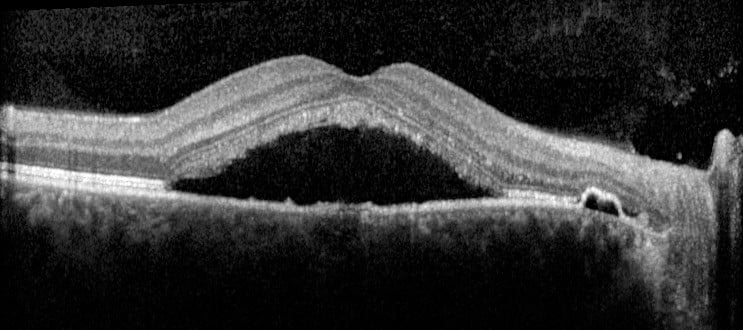Also called central serous retinopathy (CSR), the pathogenesis of this condition is poorly understood. It typically features a dome of fluid that collects underneath the central macula. The choroidal vessels underneath the macula may be engorged.
In most patients CSCR settles with time, but it can recur, and sometimes it enters a chronic phase. It can be associated with steroid use, including inhalers and skin creams, and a ‘Type A’ personality.
CSCR is best seen with optical coherence tomography (OCT).
OCT showing a dome of sub-macular fluid.
Normal OCT.
Symptoms
Blurred and distorted central vision. The elevated macula may alter the spectacle prescription.
Management
As the majority of acute cases resolve with time, management is typically conservative, with serial OCT scans to monitor change. For chronic cases there is no perfect treatment, but the most commonly used options are low fluence photodynamic therapy or micropulse macular laser.

